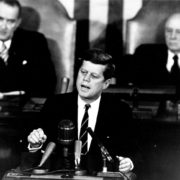How to revise for A Level History?
How to study for A Level History? The study of A Level History requires carefully planning and execution to make significant progress in your preparation for the examinations. Apart from the identification of common errors, development of SBQ answering techniques and essay writing skills, it is imperative that you have organised your study materials and practice questions. Therefore, in this issue, we will focusing on various aspects of revision to guide you through this meaningful journey that leads you to the goal of attaining A at the A Level History examination.
Step 1. Arrange your materials Start your revision by arranging your learning materials that you have received. By organising your own notes, essays and SBQs, you are also de-cluttering your mind. This approach is important as it ensures that you are clear on where to source for the relevant information should the need arises.
One useful way is to separate your materials by Themes or Topics. For example, the Topic on Cold War, which features a three-part series [Emergence of Bipolarity, World divided by the Cold War and End of Bipolarity], can be organised as one individual set of materials. You can consider using a file divider or even a colored A4 paper as a make-shift divider.
Within each set of materials, make sure that you have separated them into the following: (i) Notes (ii) Questions [Essays/SBQs]. For Notes, you are encouraged to include a summary cover page to list down the areas of study (which will be elaborated later below). As for Questions, you can organise them into ‘Basic’ and ‘Challenging’ types.
Step 2. Plan your timetable Now that you have organised your learning materials, the second step involves the development of a personal timetable. A timetable is important as it helps you to set priorities on your daily tasks, be it academic, recreational or personal matters. As quoted by many, ‘Fail to plan, plan to fail’. Getting your priorities right will ensure that you stay committed and focused on the ultimate aim of acing the A Level History examinations.
To get started, you can use a physical or online daily planner to organise your time. For example, you can use an Excel Spreadsheet that display the monthly calendar. First, fill in the time-slots that you are certain of, like the classes at school. Second, include time-slots that you want to revise for History, as well as other subjects. Personally, I am of the opinion that one day’s worth of revision should not exceed two subjects. For instance, your revision in one full day can be as such: History from morning till mid-afternoon; General Paper from mid-afternoon till late evening.Step 3. Take notes during revision In the context of A Level History, it is understandable that some students may dread the revision process as it requires thorough reading and comprehension of facts and figures. However, that is only partially true as students are not expected to regurgitate every single piece of information that they have access to. The third step involves the process of taking notes. This means that you take a given set of materials, then re-organise and summarise the essential parts that can be used for the examination questions.
There are many ways to take notes while reading the materials. One of the most common practices is writing out the points on a separate piece of paper. For some students, they have the preference of creating ‘mind-maps’ to form mental images of the information. Others may have the inclination to type the points out in soft copy and compile the pointers by topics or themes. Try out different approaches to determine your preference for note-taking.
Here are some useful pointers to guide you in your note-taking experience: – List down the key events that took place. Include a brief description of the incident with the following considerations, like ‘what happened’, ‘why did it happen’ and ‘how does it relate to the topic of study’ – Create a timeline to obtain a clearer picture of the events that occurred in relation to the topic of study [For example, set a timeline of what happened before the Cold War began] – Leave out the intricate details in your personalised set of notes. Remember, you can always refer to your original copy of learning materials, like the additional readings or even online sources, if the need arises. Focus on the idea of preparing a condensed version of your notes
Step 4. Attempt and review practice questions After the note-taking process has concluded, assess its applicability by answering essay or source-based case study questions. By attempting questions, you can find out whether the information listed in your condensed notes are of relevance to the examination. If it is your first time preparing a personalised set of notes, do not be discouraged if you have left out any information. Revisit the original set of study materials and add the relevant parts into your notes.
Typically, the original set of notes should contain the examples and supplementary information to back up a common argument to a historical perspective. However, the notes may lack elaboration that provides direction in the discussion of the examination questions. Therefore, you can consider using a ‘basic’ question to organise your materials more effectively. For example, in the Paper 1 topic of United Nations, set a generic question, like the ‘Factors affecting the political effectiveness of the United Nations in the Cold War period’ to arrange your notes. Clearly, it would make more sense to re-organise your content from separate Case Studies into specific factors, since examination questions tend to focuses on the reasons why the UN was successful in certain cases.
Bonus: Keep trying! Now that you have identified the basic methods to revise for A Level History, what matters most is that you incorporate these tips into your revision programme. Grasping historical concepts and mastering the ‘Art of Writing’ do not happen overnight. Persistence and consistent application are the key ingredients to realise your goal.
The H2 and H1 History Tuition feature online discussion and writing practices to enhance your knowledge application skills. Get useful study notes and clarify your doubts on the subject with the tutor. You can also follow our Telegram Channel to get useful updates. We have other JC tuition classes, such as JC Math Tuition and JC Chemistry Tuition. For Secondary Tuition, we provide Secondary English Tuition, Secondary Math tuition, Secondary Chemistry Tuition, Social Studies Tuition, Geography, History Tuition and Secondary Economics Tuition. For Primary Tuition, we have Primary English, Math and Science Tuition. Call 9658 5789 to find out more.




